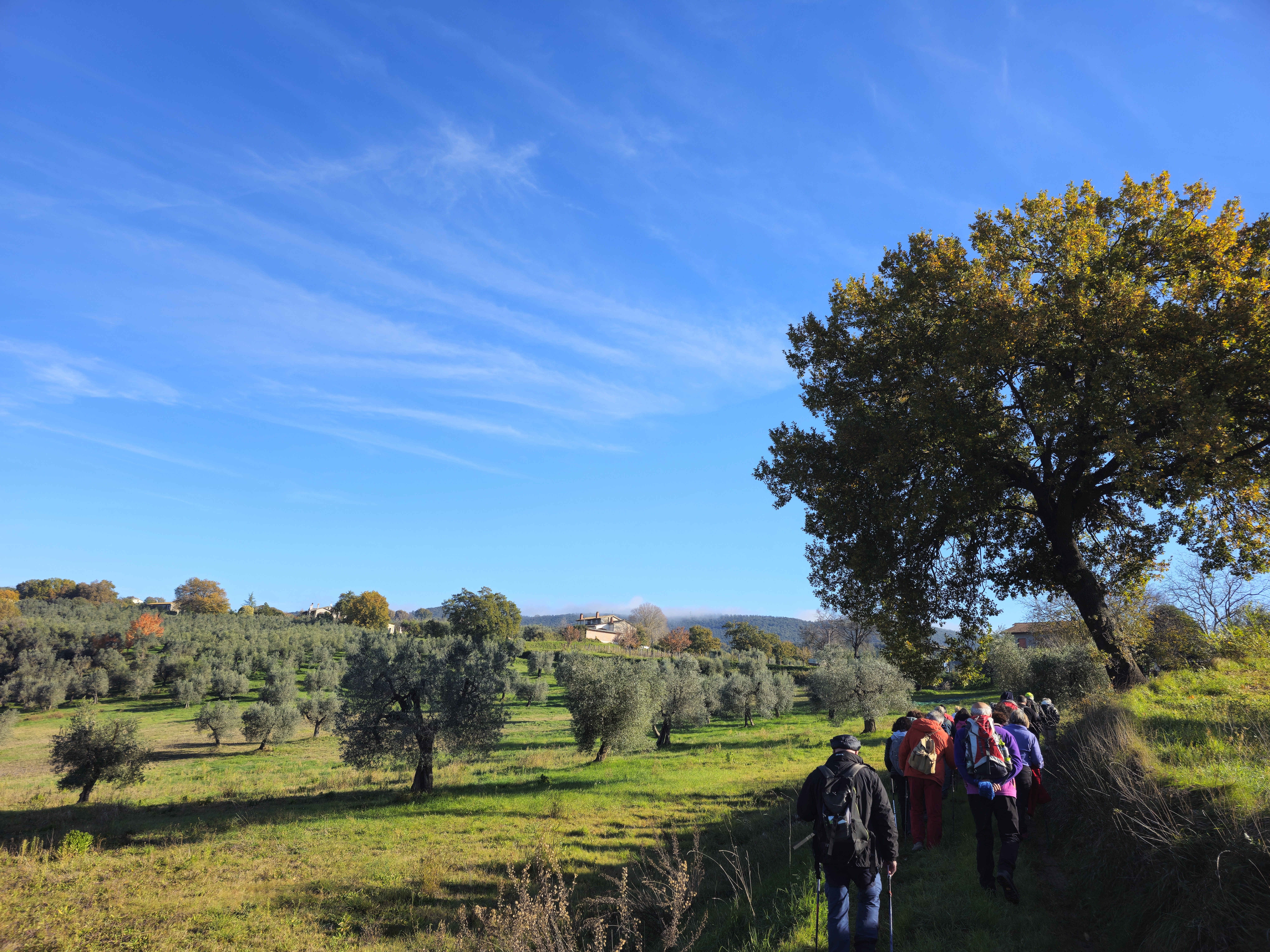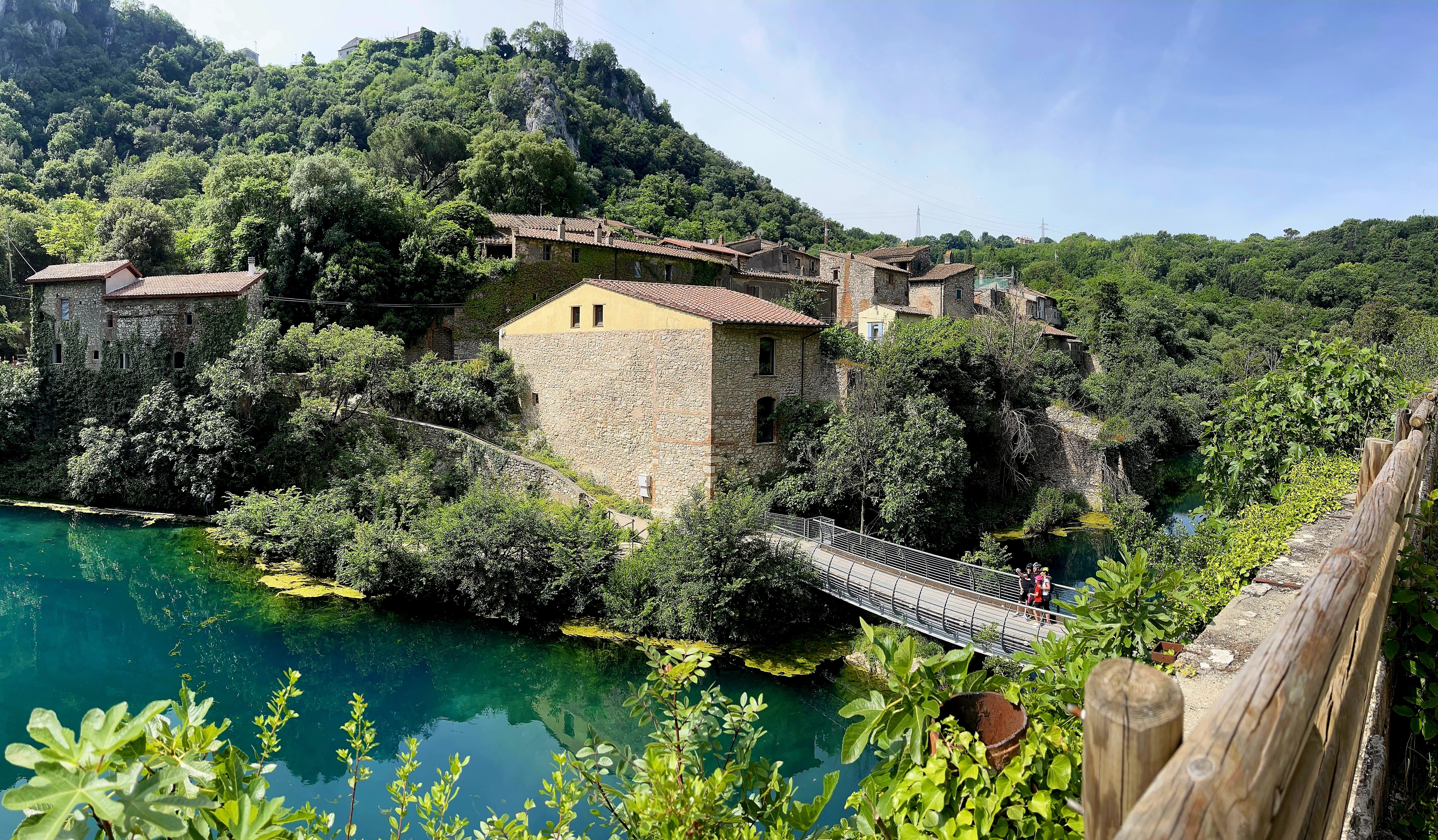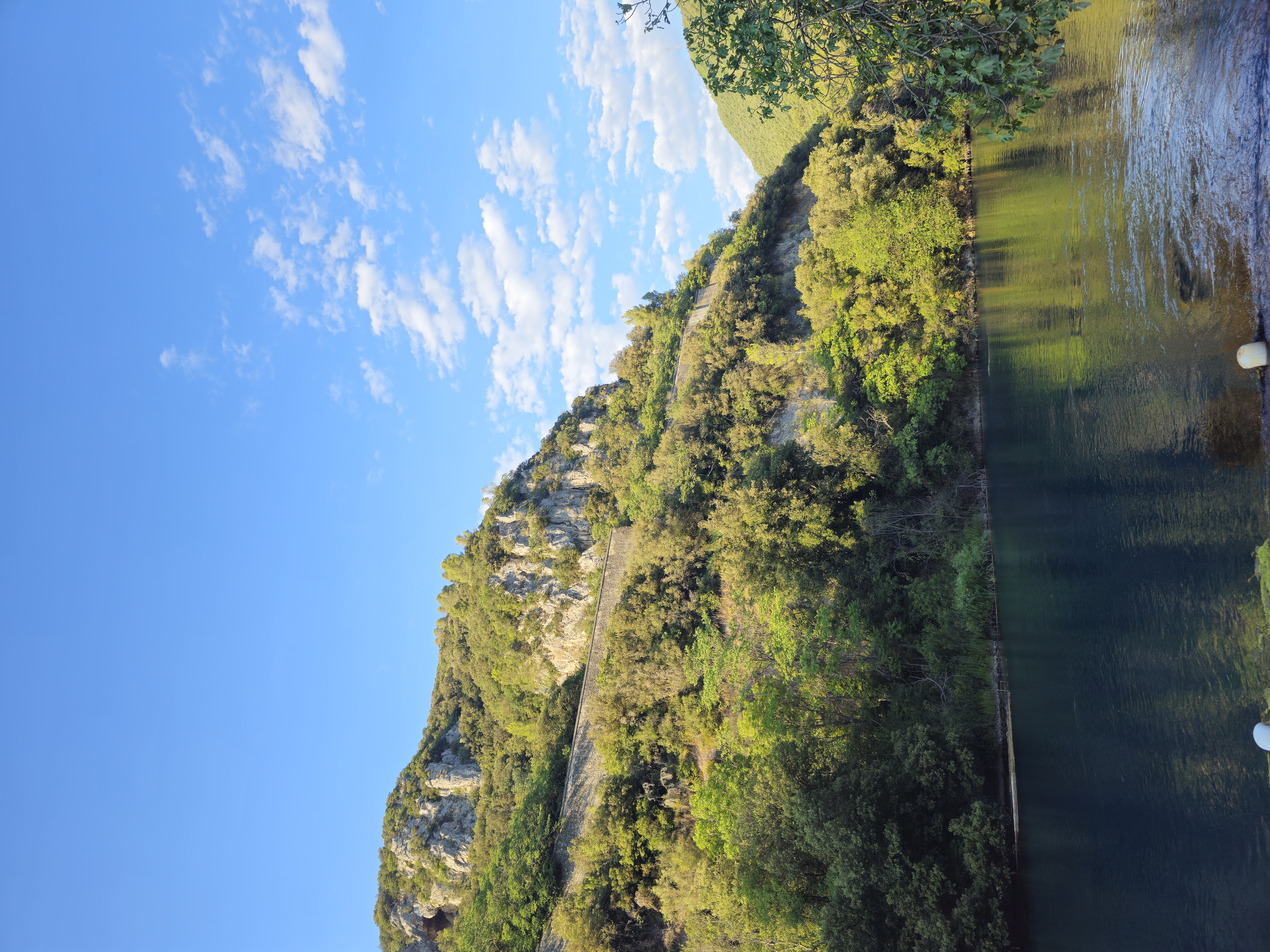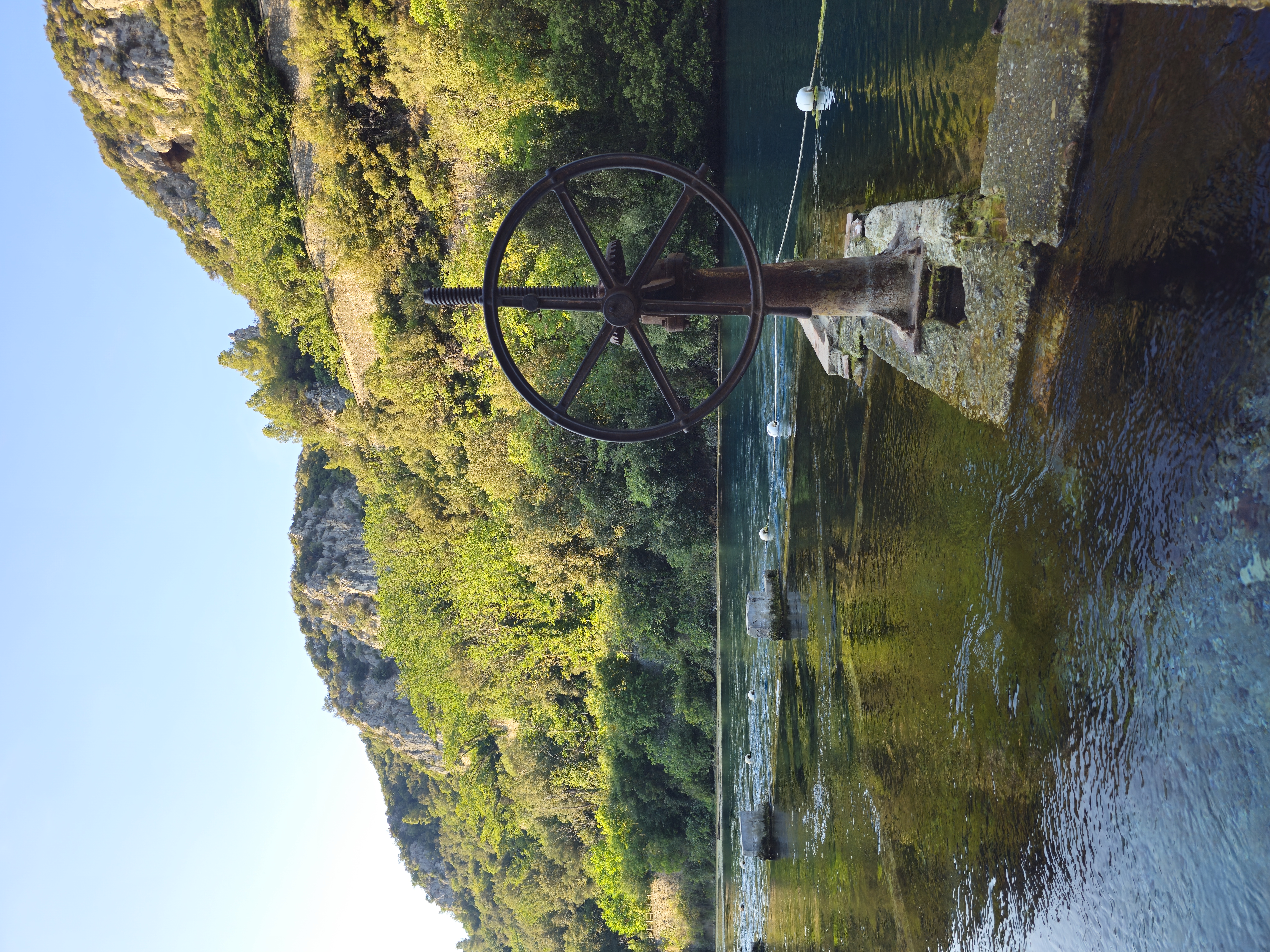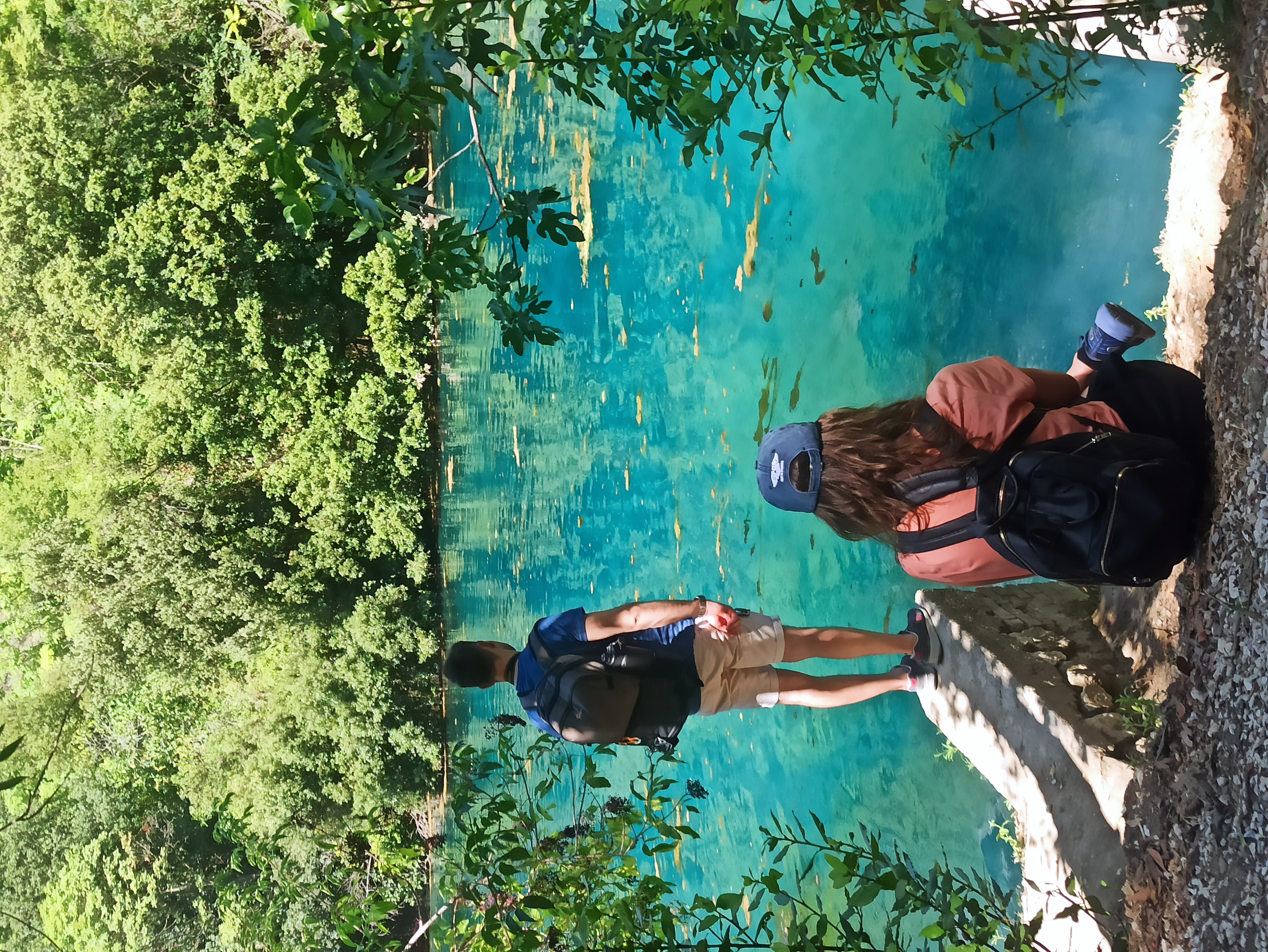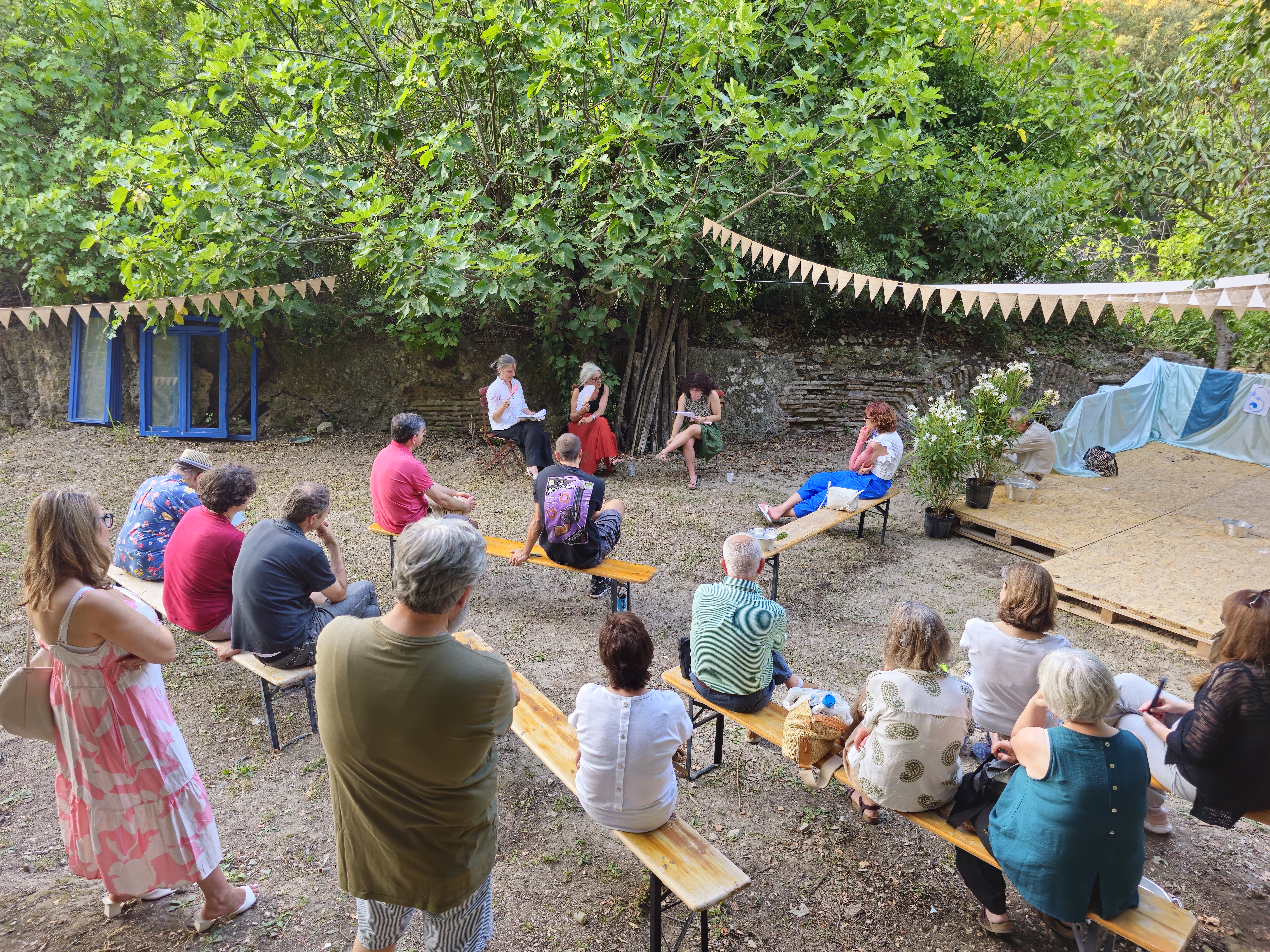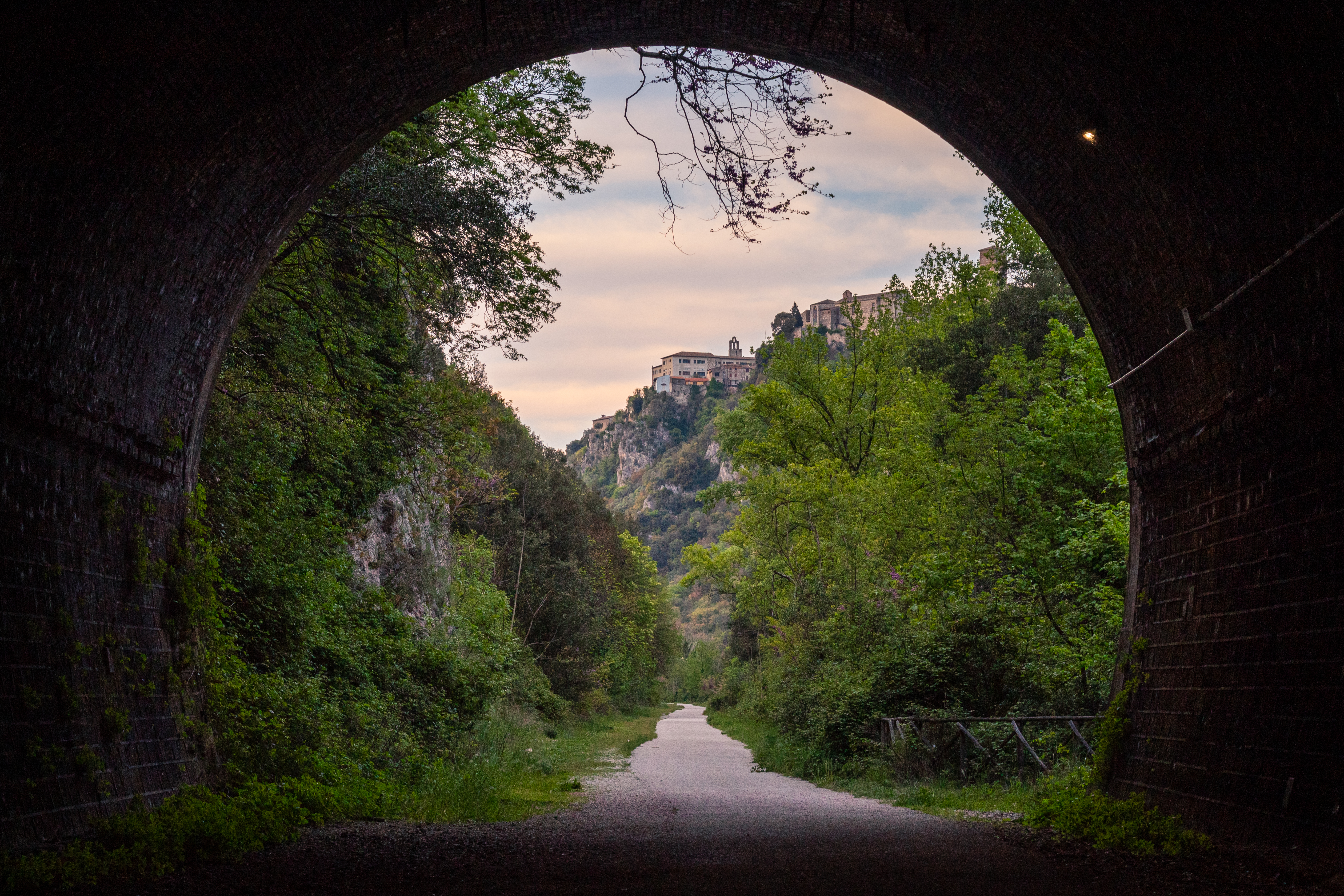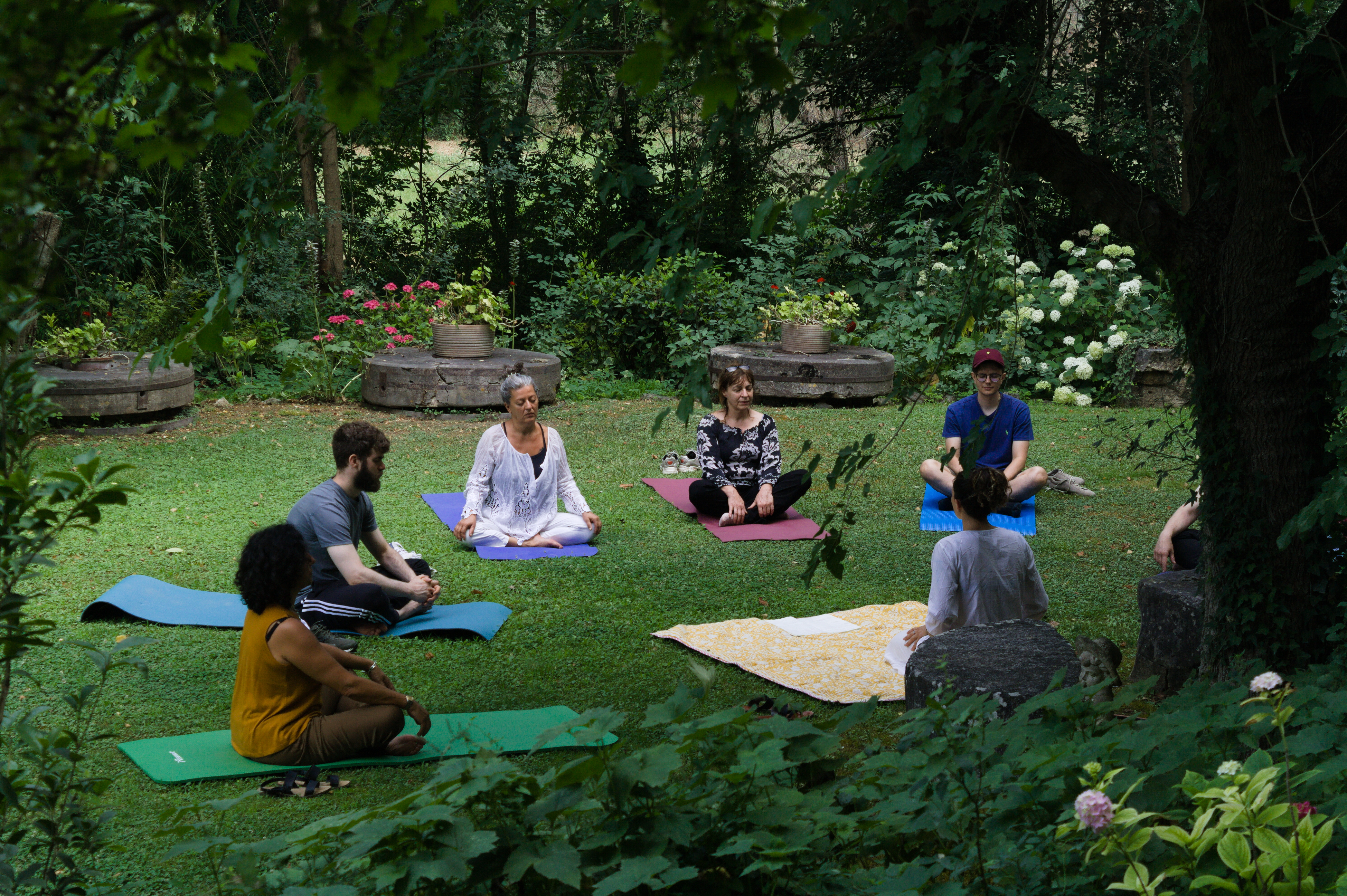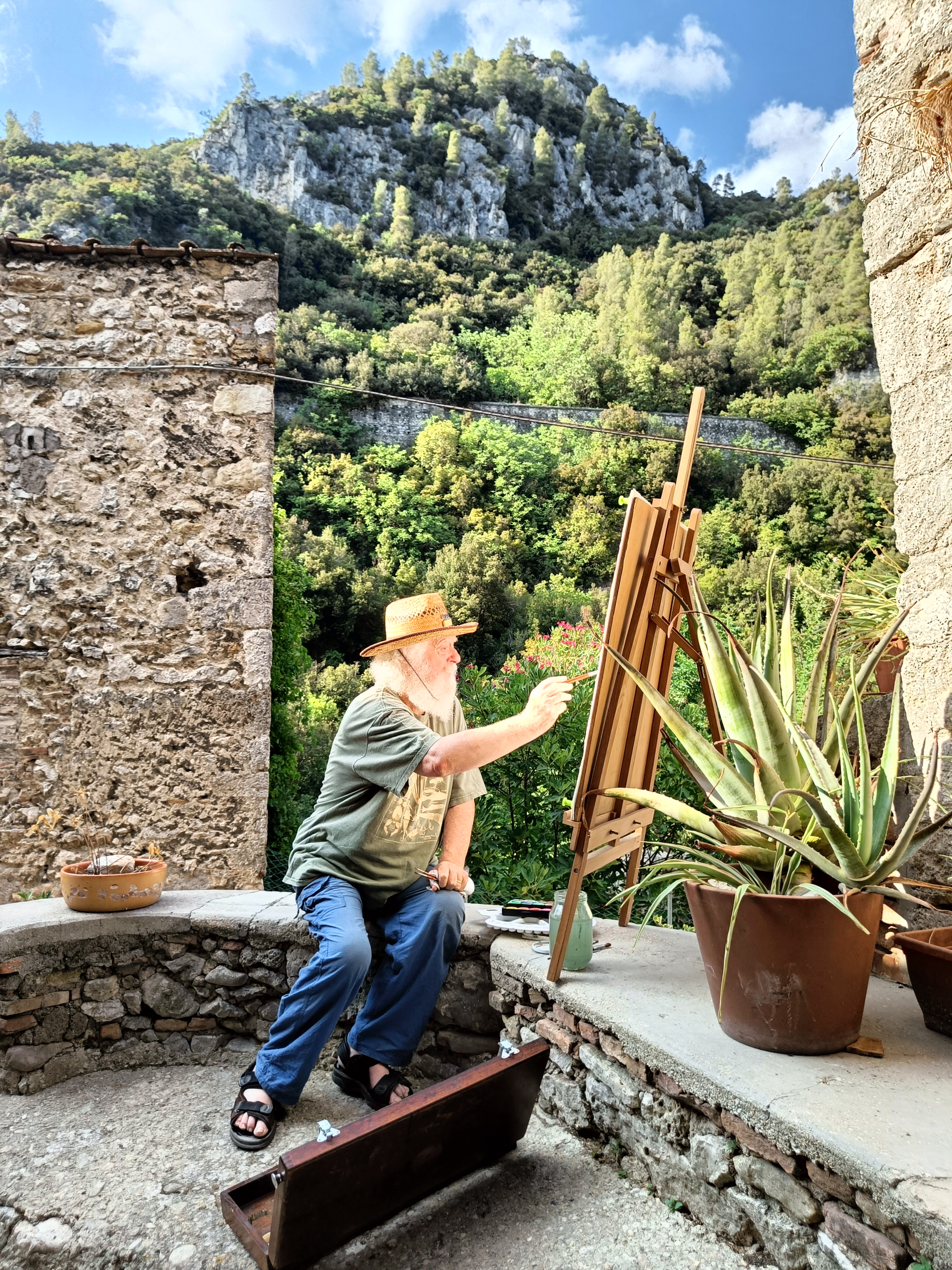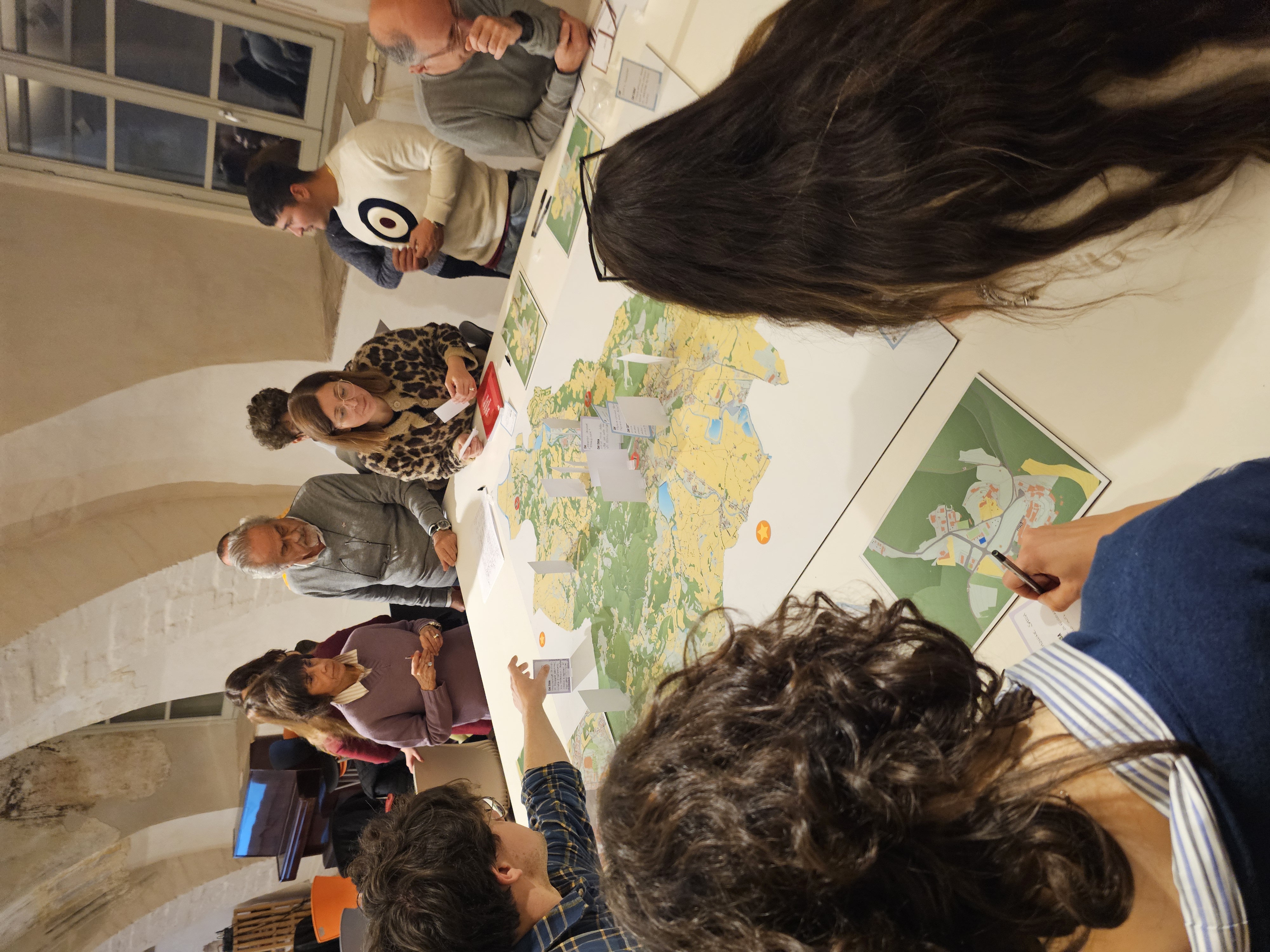The Gorges of Stifone
STIF-ONE initiative to be completed
The "Gorges of Stifone" project is a tangible application of the New European Bauhaus principles, merging territorial regeneration with the enhancement of environmental and cultural heritage. The initiative develops an innovative and sustainable tourism model, balancing conservation and modernisation while respecting the unique historical and natural landscape of Stifone, a village in the Narni Municipality.
Italy
{Empty}
Prototype level
Yes
Yes
Yes
No
No
055022: Narni (IT)
‘The Gorges of Stifone’ embodies the New European Bauhaus principles by merging territorial regeneration with the enhancement of environmental, social and cultural heritage. The initiative develops an innovative and sustainable tourism model, balancing conservation and modernisation while respecting Stifone's unique historical and natural landscape, renowned for its water heritage. The project focuses on restoring Stifone village (part of Narni Municipality), the old hydroelectric power plant, and the surrounding areas to preserve their identity. By integrating ecological solutions, it promotes sustainable tourism that enhances visitors' experiences without compromising the site's authenticity. Community engagement ensures that local voices shape the transformation process. The project empowers local residents through collaborative processes and economic opportunities. It offers visitors a high-quality experience that respects the area's identity and provides researchers and professionals with a model for best practices in sustainability and regeneration. Based on a bottom-up approach, the project involves the local community through co-design initiatives. It implements the New European Bauhaus principles in revitalising Stifone's architecture and landscape in harmony with nature, encouraging active participation, ensuring accessibility for diverse audiences, and implementing ecological solutions that protect the environment while fostering local economic growth. The expected results are a revitalised Stifone that preserves its identity while opening new economic and cultural opportunities, through a sustainable tourism model that attracts responsible visitors and promotes environmental education. Additionally, it establishes a replicable framework for other historical and natural sites across Europe. The project showcases the potential for regeneration through the convergence of water heritage, sustainability, community involvement, and the concept of ‘Arteology’.
Water Heritage
Sustainable Development
Community
'Arteology'
Regeneration
The key objectives of the project are based on implementing ecological solutions that protect the territory while fostering economic and social growth. Sustainability is at the core of the initiative, ensuring long-term environmental, economic, and social benefits. Water heritage plays a crucial role in this vision, particularly through the redevelopment of the Morìca Spring, which is at the heart of the regeneration efforts. The first part of the project focuses on rebuilding the access path, installing a wooden fence, and placing safety buoys to ensure both environmental protection and visitor safety while enhancing the site's accessibility and sustainability. To minimise the environmental footprint and to counter overtourism, the project implements a strict access regulation system using an online booking platform, which helps controlling visitor numbers and reducing ecological degradation. Furthermore, the project includes setting up of the Terni-Narni bike route, connection with pedestrian and bike route to the Nera Gorges and Marmore falls; development of Montoro trails linking Stifone to Santa Croce Mount and Montoro village. The project provides a visitor center in line with the concept of ‘Arteology’ which combines the studies of Industrial Archeology in a creative perspective, designing historical sites for engaging cultural experiences. In the future, the restoration of the Netti hydroelectric power plant, by the development of the STIF-ONE initiative, which is a part of the general project, not only will preserve cultural heritage but also introduce a renewable energy source for smart lighting of the village and community needs through the setting up of an energy community.
The key objectives of the project are based on revitalising Stifone’s unique architecture and landscape in harmony with nature, promoting beauty with cultural, social and artistic initiatives. Aesthetics and overall quality of the visitor experience is enhanced by thoughtful design, cultural enrichment, and sustainable development in line with the concept of ‘Arteology’ which combines the studies of Industrial Archeology in a creative perspective, designing historical sites for engaging cultural experiences. The reconstruction of important elements of the architecture of the Morìca Spring enhance the aesthetics of the place. By integrating heritage preservation, artistic expression, and innovative infrastructure, the project creates an harmonious balance between tradition and modernity, ensuring a deep and immersive connection with the place, evidenced by the creation of a branding strategy and Mood & Storytelling to promote the Gorges for visitors. Events and artistic workshops enrich the cultural fabric of the village, making it a vibrant and dynamic destination. At the same time, improvements in accessibility, soft mobility, and environmental integration ensure that the area remains both aesthetically pleasing and functional for residents and visitors alike. Through these efforts, the initiative serves as a model for enhancing public spaces in a way that is both visually captivating and meaningful, reinforcing the identity and attractiveness of the entire region.
The key objectives of the project are based on encouraging active participation and ensuring accessibility for diverse audiences. The main activities of the initiative in terms of inclusion are: tourism positioning by devoloping a branding strategy to promote the Gorges as a tourist destination; promotion of participatory events and community involvement to increase an active participation from local residents; development of local initiatives as opening of a food court, a guesthouse, creation of a bike rental service, and foundation of an APS for cultural events; implementation of events for tourists and residents like botanical painting workshops, concerts, book sharing, book club readings, felted wool workshop; opening of a visitor center with a multimedia museum on energy communities and renewable sources; promotion of the establishment of a local governance system by involving residents directly in the management of local heritage.
The initiative embraces inclusion by ensuring accessibility, affordability, and community participation in decision-making. The tourism management system considers all visitors by implementing services and local businesses are engaged in providing affordable services, including transport, workshops and accommodations, making the destination accessible to a wider audience. Governance is designed to be participatory, involving the local community in key decisions by focus groups and surveys, focusing on land use, infrastructure improvements, and cultural programming. The project applies design-for-all principles, ensuring that public spaces, information access, and facilities meet diverse needs. By fostering collaboration between public institutions, businesses, and residents, the initiative strengthens social cohesion and creates an inclusive economic model that benefits all stakeholders.
The initiative embraces inclusion by ensuring accessibility, affordability, and community participation in decision-making. The tourism management system considers all visitors by implementing services and local businesses are engaged in providing affordable services, including transport, workshops and accommodations, making the destination accessible to a wider audience. Governance is designed to be participatory, involving the local community in key decisions by focus groups and surveys, focusing on land use, infrastructure improvements, and cultural programming. The project applies design-for-all principles, ensuring that public spaces, information access, and facilities meet diverse needs. By fostering collaboration between public institutions, businesses, and residents, the initiative strengthens social cohesion and creates an inclusive economic model that benefits all stakeholders.
The citizens benefiting from the initiative have been involved in significant ways, from focus groups to the formation of working groups. The local community is actively engaged in the transformation process through listening and co-design initiatives, ensuring that local voices play a central role in governance, planning and implementation of the project. The active participation of residents has been fundamental to preserve Stifone's historical and environmental identity, ensuring that the solutions adopted address the needs and desires of the local community as well as those of visitors, collected through surveys and sentiment analysis.This involvement strengthened citizens' sense of belonging and responsibility towards the area, promoting a sustainable and shared management of natural and cultural resources. Additionally, it has been creating economic and social opportunities, improving the quality of local life, and encouraging the development of sustainable tourism that enhances the authenticity and spirit of the place while harmonising economic, social, ecological, and cultural objectives. Stakeholders were mapped, classified, analysed, and involved in public initiatives and focus groups to provide innovative ideas and solutions. This created a model of territorial regeneration that can potentially be replicated throughout Europe in historical and naturalistic sites. Through inclusion and collaboration, the project aims to transform Stifone into a hub of cultural and social innovation. It tests a development model based on the concept of ‘Arteology’, transforming abandoned industrial infrastructures into areas where the community and visitors recognize themselves and converge towards a vision of intelligent and inclusive development, aimed at improving the quality of life of people and communities. The participatory approach not only ensures the project's long-term sustainability but also its ability to adapt and evolve in response to future challenges.
The initiative has actively engaged stakeholders at multiple levels—local, regional, national, and European—to ensure a holistic and impactful approach in both its design and implementation phases. The community of Stifone and Narni has been at the heart of the project. Residents were involved through participatory events, focus groups, and consultations, ensuring their input shaped key developments. Local businesses and entrepreneurs benefited from the creation of a refreshment point, guesthouses, and a bike rental service, fostering economic opportunities. Additionally, a local governance model is being developed to further empower citizens in managing public assets. The initiative aligns with regional tourism and environmental strategies, integrating soft mobility solutions like the Terni-Narni cycling path and the Montoro Trails to boost eco-tourism and connections across the area. At national level, the initiative has been backed by funding and strategic support through Italy’s Rural Development Program (RDP). Collaboration with Enel Produzione (one of the main Italian energy players) facilitated the acquisition of key land areas, including the Morìca Spring, enabling critical redevelopment efforts. Additionally, partnerships with academic institutions, such as Sapienza University, have contributed to innovative projects like the STIF-ONE initiative, which is a part of the general project that is not yet completed, featuring an educational turbine and smart lighting for the village. The initiative aspires to position Stifone and the Nera Gorges within the broader European cultural and environmental landscape. Efforts are underway to include the area in the European Route of Industrial Heritage, enhancing international recognition. Furthermore, the establishment of a Renewable Energy Community aligns with EU sustainability goals, integrating renewable energy solutions that benefit both the local population and the environment.
The initiative integrates a multidisciplinary approach, combining expertise from various fields to ensure a comprehensive, sustainable, and innovative development strategy. Urban planning and architecture play a central role in the redevelopment of the Morìca Spring, the design of new tourist spaces, and the restoration of industrial areas and buildings such as the Netti Power Plant. Environmental science and ecology guide the conservation efforts of the Nera Gorges, support the development of sustainable tourism models, and facilitate the implementation of renewable energy solutions. Cultural heritage and tourism contribute to the enhancement of Stifone’s historical and industrial legacy, with efforts directed toward its inclusion in the European Route of Industrial Heritage and the creation of engaging cultural experiences, such as the Literary Café and art workshops. In collaboration with Sapienza University, renewable energy and engineering initiatives have led to the development of the STIF-ONE project, which will feature an educational turbine and smart lighting solutions. Sociology and community engagement ensure the active participation of local residents, fostering a governance model that encourages citizen-driven management of public assets. Digital innovation and communication play a crucial role in positioning the area as a tourist destination, with a digital booking system and social media campaigns. Finally, mobility and infrastructure improvements are reflected in the promotion of eco-friendly transportation, exemplified by the creation of the Terni-Narni bike route and the Montoro Trails.
The innovation of the “Gorges of Stifone” project stems from the synergy of multiple factors and the adoption of sustainable development models reinterpreting industrial areas and infrastructures in a modern and creative way, blending it with the enhancement of the area's natural resources, with a particular focus on the ‘water’ resource. Here are the five innovative elements of the project:
1. Technological enhancement of historical-cultural heritage: integration of innovative technologies such as a multimedia visitor center dedicated to green issues, photovoltaic systems, e-mobility, smart lighting, and Renewable Energy Communities to highlight the ‘genius loci’ of the village and its hinterland.
2. Energy sustainability: energy production from renewable sources, transforming the village into a pilot model for the Narni area.
3. Regeneration of the hydroelectric power plant: the hydroelectric power plant, the historical center piece of the project, will be equipped with an educational and informational center dedicated to sustainable development. Public lighting and the visitor center's management will be powered by the renewable power plant.
4. ‘Arteology’: design and implementation of a development strategy based on ‘Arteology’, an evolution of creative art-based tourism. Through participatory learning activities, the project aims to transform visitors and residents into proactive change agents.
5. Water heritage: the project centers around the water resource, both from an energy and urban redevelopment perspective. It will attract sustainable tourism by enhancing the river routes of Narni and Stifone, culminating in the ‘Rigenerarsi Festival’, a widespread event throughout the city of Narni featuring art exhibitions, meetings, and author readings on the theme of regeneration in its broadest sense: urban, social, economic, and creative.
1. Technological enhancement of historical-cultural heritage: integration of innovative technologies such as a multimedia visitor center dedicated to green issues, photovoltaic systems, e-mobility, smart lighting, and Renewable Energy Communities to highlight the ‘genius loci’ of the village and its hinterland.
2. Energy sustainability: energy production from renewable sources, transforming the village into a pilot model for the Narni area.
3. Regeneration of the hydroelectric power plant: the hydroelectric power plant, the historical center piece of the project, will be equipped with an educational and informational center dedicated to sustainable development. Public lighting and the visitor center's management will be powered by the renewable power plant.
4. ‘Arteology’: design and implementation of a development strategy based on ‘Arteology’, an evolution of creative art-based tourism. Through participatory learning activities, the project aims to transform visitors and residents into proactive change agents.
5. Water heritage: the project centers around the water resource, both from an energy and urban redevelopment perspective. It will attract sustainable tourism by enhancing the river routes of Narni and Stifone, culminating in the ‘Rigenerarsi Festival’, a widespread event throughout the city of Narni featuring art exhibitions, meetings, and author readings on the theme of regeneration in its broadest sense: urban, social, economic, and creative.
The ‘Gorges of Stifone’ initiative represents an exemplary model of sustainable tourism development based on a participatory and bottom-up approach. The Municipality of Narni has actively involved the local community and stakeholders through focus groups, surveys and public initiatives aiming to create a shared and long-term sustainable project. The starting point was active listening to the Stifone community, a village that, since 2017-2018, has experienced an exponential increase in overtourism, with negative impacts on the area's bio-cultural balance. To address this challenge, the Municipality initiated a participatory planning process, engaging citizens, economic operators, sustainable tourism experts, and environmental activists. The process was structured around three fundamental pillars:
1. Holistic well-being: creation of immersive experiences such as meditation and digital detox to foster mindful tourism.
2. Archaeological and cultural enhancement: promotion of the village's historical and industrial heritage through educational initiatives and thematic routes.
3. Environmental sustainability: activism and protection of the local ecosystem to preserve the area's fragile balance.
A distinctive aspect of the project was the continuous dialogue with residents, which helped overcome initial resistance and turned part of the community into active supporters of the initiative. Through experimental activities, such as en plein air painting sessions, new ways of experiencing public spaces were developed, encouraging a more respectful and conscious form of tourism. The project led by the Municipality of Narni continues with a long-term vision, aiming to create an integrated and sustainable tourism model that generates value for the local community and the surrounding area. It embraces and enhances the three core principles of the New European Bauhaus improving both the visitor experience and the residents’ quality of life.
1. Holistic well-being: creation of immersive experiences such as meditation and digital detox to foster mindful tourism.
2. Archaeological and cultural enhancement: promotion of the village's historical and industrial heritage through educational initiatives and thematic routes.
3. Environmental sustainability: activism and protection of the local ecosystem to preserve the area's fragile balance.
A distinctive aspect of the project was the continuous dialogue with residents, which helped overcome initial resistance and turned part of the community into active supporters of the initiative. Through experimental activities, such as en plein air painting sessions, new ways of experiencing public spaces were developed, encouraging a more respectful and conscious form of tourism. The project led by the Municipality of Narni continues with a long-term vision, aiming to create an integrated and sustainable tourism model that generates value for the local community and the surrounding area. It embraces and enhances the three core principles of the New European Bauhaus improving both the visitor experience and the residents’ quality of life.
The initiative’s holistic approach—combining sustainability, community participation, digital innovation, and heritage conservation—creates a scalable model adaptable to diverse contexts. Community-driven governance ensures local residents actively shape the planning and management of natural and cultural assets, fostering long-term sustainability through shared responsibility and engagement. Sustainable tourism and environmental protection are central, with a controlled-access system regulating visitor flows to minimise impact. The redevelopment of the source of the Morìca serves as a model for other sites where natural heritage is vital. Soft mobility solutions, including cycling routes and pedestrian trails, further reduce carbon footprints while enhancing visitor experiences. Renewable energy and smart technologies provide a framework for energy independence and decarbonisation. The Renewable Energy Community model, integrating solar and hydroelectric solutions, can be replicated in both rural and urban areas seeking sustainability. Education and cultural innovation enhance awareness and participation. The visitor center, with a multimedia museum on renewable energy and industrial heritage, serves as a reference for promoting sustainability and conservation. With an adaptive and scalable methodology, the initiative allows for phased implementation, ensuring flexibility based on local needs. The Morìca Spring model demonstrates how nature conservation, tourism, and local economic development can coexist, offering a blueprint for other regions. By integrating digital solutions, sustainable tourism, and community engagement, the initiative presents an innovative, transferable model applicable across Europe and beyond.
Mass tourism, cultural heritage erosion, climate change, and the need for more sustainable economic models are some of the global issues the project addresses through an innovative and participatory approach.
1.Mass tourism and sustainable flow management: in many destinations mass tourism led to a loss of authenticity and unsustainable pressure on local ecosystems. Since 2017-2018, Stifone has experienced a surge in ‘hit-and-run’ tourism, threatening its bio-cultural balance. The long-term proposed solution focuses on immersive and sustainable experiences, such as meditation, digital detox, and artistic activities in sensitive spaces, helping shift tourism from being exploitative to regenerative.
2.Preservation of cultural and natural heritage: many communities face the risk of losing their identity due to tourism pressure. Stifone, with its industrial past tied to hydroelectric energy production, adopted a model that integrates tourism with heritage conservation. The project includes archaeological routes, museum, second-hand bookshop, storytelling spaces, fostering a mindful rediscovery of the village’s history.
3.Climate change and environmental protection: Stifone’s fragile ecosystem requires a strong commitment to environmental sustainability. The project has implemented solutions such as bike rental service to reduce private vehicle impact, delimitation of a natural bathing area to avoid invasive interventions on the river, and awareness-raising activities for both tourists and residents.
4.Community engagement and sustainable economic models: one of the major global challenges – addressed by cohesion policies - is the depopulation and identity loss of small communities. Stifone demonstrates that well-managed tourism can be an asset rather than a threat. Active involvement of residents has helped overcome initial resistance and foster a sense of belonging to the project. New hospitality and recreational activities ensure lasting positive economic impact.
1.Mass tourism and sustainable flow management: in many destinations mass tourism led to a loss of authenticity and unsustainable pressure on local ecosystems. Since 2017-2018, Stifone has experienced a surge in ‘hit-and-run’ tourism, threatening its bio-cultural balance. The long-term proposed solution focuses on immersive and sustainable experiences, such as meditation, digital detox, and artistic activities in sensitive spaces, helping shift tourism from being exploitative to regenerative.
2.Preservation of cultural and natural heritage: many communities face the risk of losing their identity due to tourism pressure. Stifone, with its industrial past tied to hydroelectric energy production, adopted a model that integrates tourism with heritage conservation. The project includes archaeological routes, museum, second-hand bookshop, storytelling spaces, fostering a mindful rediscovery of the village’s history.
3.Climate change and environmental protection: Stifone’s fragile ecosystem requires a strong commitment to environmental sustainability. The project has implemented solutions such as bike rental service to reduce private vehicle impact, delimitation of a natural bathing area to avoid invasive interventions on the river, and awareness-raising activities for both tourists and residents.
4.Community engagement and sustainable economic models: one of the major global challenges – addressed by cohesion policies - is the depopulation and identity loss of small communities. Stifone demonstrates that well-managed tourism can be an asset rather than a threat. Active involvement of residents has helped overcome initial resistance and foster a sense of belonging to the project. New hospitality and recreational activities ensure lasting positive economic impact.
The initiative is dedicated to long-term development and practical implementation, aligning with the New European Bauhaus values of sustainability, inclusion, and aesthetics. Building on previous successes, it aims to expand its impact through infrastructure improvements, cultural programs, and sustainable governance models that enhance both environmental and social well-being. A key focus is sustainability and green innovation, with the creation of the Renewable Energy Community to ensure energy self-sufficiency for Stifone and neighbouring villages through the integration of solar and hydroelectric power. The expansion of soft mobility infrastructure will create new cycling and pedestrian trails, strengthening connections between key natural and cultural sites. Cultural and social inclusion are at the heart of the initiative, with the opening of a visitor center featuring a multimedia museum on renewable energy and industrial heritage. This space will serve as an educational resource for schools and researchers while promoting public awareness of sustainability. Local traditions will be revitalised through community-driven activities. Strengthening participatory governance will ensure that residents and stakeholders play an active role in shaping the future of the area.Tourism and economic sustainability efforts will extend the controlled-access model to other natural sites, preserving fragile ecosystems while supporting responsible tourism. Local entrepreneurship will be encouraged through the development of sustainable tourism businesses, including guesthouses and eco-friendly rental services. To enhance visibility and attract a wider audience, collaborations with influencers and media will position Stifone as a model for balanced and environmentally conscious tourism.

